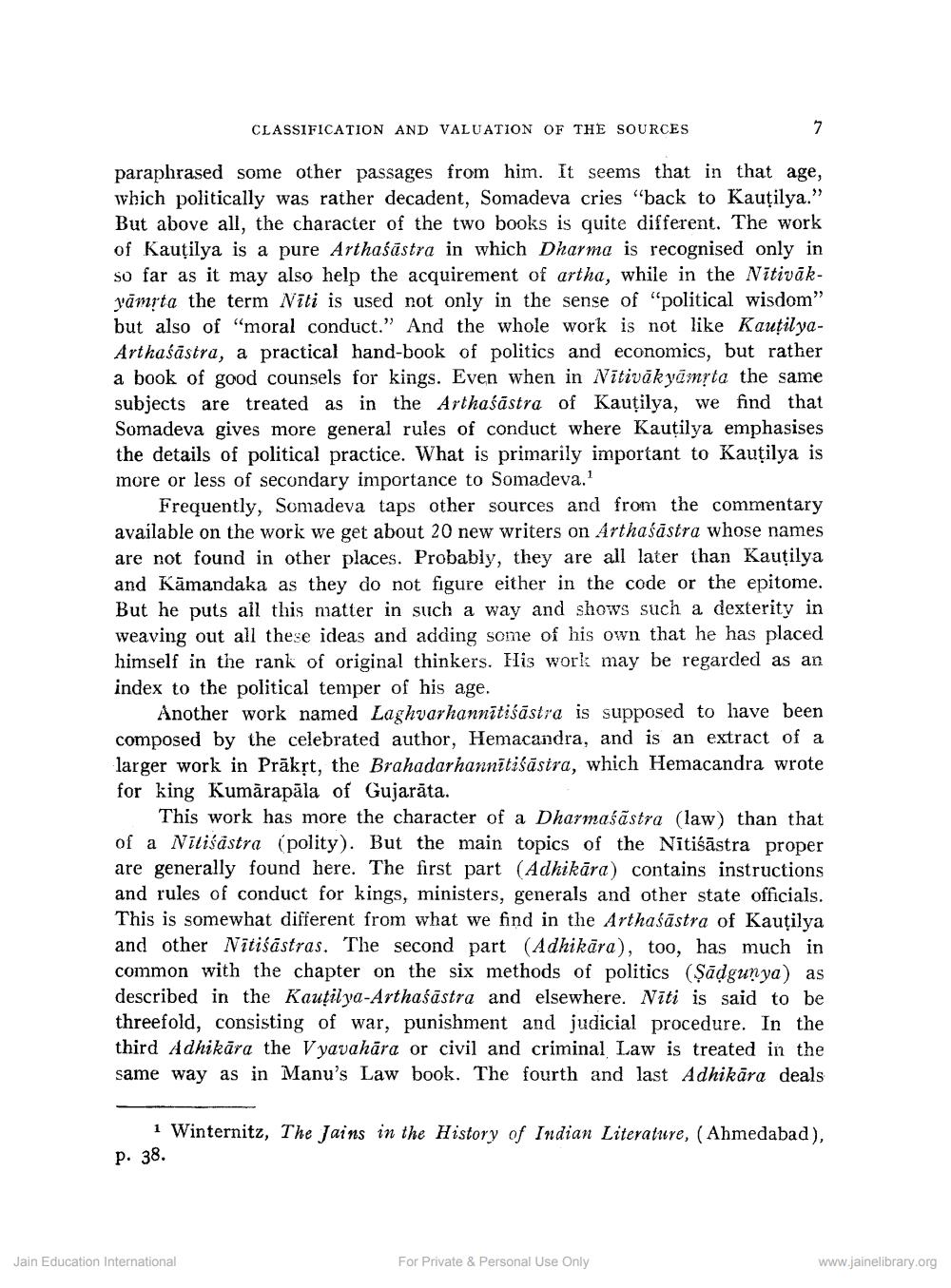________________
CLASSIFICATION AND VALUATION OF THE SOURCES
paraphrased some other passages from him. It seems that in that age, which politically was rather decadent, Somadeva cries "back to Kautilya." But above all, the character of the two books is quite different. The work of Kautilya is a pure Arthasästra in which Dharma is recognised only in so far as it may also help the acquirement of artha, while in the Nitivākyumpta the term Niti is used not only in the sense of "political wisdom" but also of "moral conduct." And the whole work is not like KautilyaArthasastra, a practical hand-book of politics and economics, but rather a book of good counsels for kings. Even when in Nitiväkyämṛto the same subjects are treated as in the Arthasästra of Kautilya, we find that Somadeva gives more general rules of conduct where Kautilya emphasises the details of political practice. What is primarily important to Kautilya is more or less of secondary importance to Somadeva."
Frequently, Somadeva taps other sources and from the commentary available on the work we get about 20 new writers on Arthaśästra whose names are not found in other places. Probably, they are all later than Kautilya. and Kämandaka as they do not figure either in the code or the epitome. But he puts all this matter in such a way and shows such a dexterity in weaving out all these ideas and adding some of his own that he has placed himself in the rank of original thinkers. His work may be regarded as an index to the political temper of his age.
Another work named Laghvarhannitiśästra is supposed to have been. composed by the celebrated author, Hemacandra, and is an extract of a larger work in Präkṛt, the Brahadarhannitiśästra, which Hemacandra wrote for king Kumarapala of Gujarāta.
This work has more the character of a Dharmasastra (law) than that of a Nitidstra (polity). But the main topics of the Nitišästra proper are generally found here. The first part (Adhikara) contains instructions and rules of conduct for kings, ministers, generals and other state officials. This is somewhat different from what we find in the Arthalästra of Kautilya and other Nitildstras. The second part (Adhikära), too, has much in common with the chapter on the six methods of politics ($adgunya) as described in the Kautilya-Arthasästra and elsewhere. Niti is said to be threefold, consisting of war, punishment and judicial procedure. In the third Adhikara the Vyavahara or civil and criminal Law is treated in the same way as in Manu's Law book. The fourth and last Adhikara deals
Jain Education International
7
1 Winternitz, The Jains in the History of Indian Literature, (Ahmedabad), p. 38.
For Private & Personal Use Only
www.jainelibrary.org




